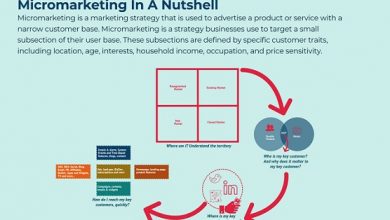Types of recruitment/3 types/best type/most used forms
Many organizations spend considerable resources and time recruiting new talent. Determining the best types of recruitment and selection , as well as appropriate strategies for finding the right candidates, is critical to the success of the people management field .
Effective hiring practices can save your company time, money, and other resources. On the other hand, choosing the wrong method will lead to wasted effort and lost opportunity cost.
The success of recruiting new employees depends on the methods an organization chooses. In this article, we will discuss 3 types of recruitment: external, internal and mixed. We will also cover its advantages and disadvantages. Check out the report and find out which model is best for your organization’s needs!
What are the types of recruitment and selection?
Filling vacancies is one of HR’s top priorities. When company roles remain unfilled, monetary losses can amount to around $500 a day, and staff productivity declines as the organization’s employees have to work harder to perform tasks they were not originally hired to do.
Investing in an effective hiring program that not only attracts but also retains these talents is critical for all types of businesses. But before advertising the vacancies on all channels and unnecessarily spending the company’s money, it is necessary to understand which of the 3 types of recruitment, which we will discuss below, is the most suitable for the type of position that must be filled.
1-Internal Recruitment
Internal recruitment is characterized by the internal movement of talent, instead of the recruiter looking for professionals in the market, he seeks opportunities for promotion or even career transition among employees of the organization itself. It is a possibility that the company has to look, first, at its own talent pool, and then, seek other professionals in the market.
Organizations today use internal recruiting to fill positions that require a good view of the organization’s internal processes. Furthermore, using this feature also encourages employee loyalty and a sense of progress.
It is important to note that there are different internal recruitment models:
- Promotions: This is the most common form in the internal recruitment process, when an employee ascends to the position of his predecessor or some other leader of the organization.
- Transfers: when an employee moves to a new team or department.
- Internal vacancy opening: when HR informs the entire organization that there is a vacancy in X department and that any employee of the organization can apply for the position, as long as they have the required prerequisites.
- Employee Referrals: Employee referral programs actively encourage referrals from people outside the organization by an employee. The aim of this type of program is to make referrals a more sustainable and reliable source of candidates. Some recruiters point out that this type of hiring is an internal recruitment, others emphasize that it is a mixed recruitment.
Benefits
- a quick process
- Candidates are already known to the company
- Candidates may have previous experience in the role
- Less expensive process
Disadvantages
- Usually a small group of candidates
- Candidates may not have experience in the role
- Lack of new ideas in the business
2-External Recruitment
External recruitment consists of looking for professionals in an environment outside the company, that is, in the job market.
In this process, the organization expects the external candidate to bring defined skills, based on the position for which they are being recruited, as well as new perspectives and approaches that the team can benefit from.
There are several external recruitment methods, either actively or passively, that the organization’s Talent Acquisition area should consider:
- Social networks
- Networking (Informal, Formal)
- Job Fairs (Online and Virtual)
- On-campus university recruitment
- Advertising (whether on social media, TV, radio etc.).
- Hiring agencies or headhunters
Depending on the importance and demand of the position to be filled, certain sourcing methods may be used more than others to help generate candidates with the required education and experience.
Benefits
- Can bring new ideas to the business
- New enthusiasm and skills
- Largest pool of potential candidates
Disadvantages
- It takes longer to search for candidates
- The process is more expensive
- New employees are not known to the company
- Takes longer than internal recruiting
- It is a good model if the company wants to invest in a diversity program
3-Mixed Recruitment
This is when companies recruit both existing employees (inside the company) and potential employees (outside the company) for new roles. These methods are called internal recruitment and external recruitment, or mixed recruitment. Internal recruiting often occurs when an existing employee is seeking a promotion or wants to work in a different role within the company.
Advertising for internal recruiting is typically accomplished through internal job postings posted via internal emails, bulletin boards, business websites, and internal company memos.
Advertising for external recruitment is usually carried out through external job advertisements published on job sites, recruitment agencies, the company’s own website, newspapers and specialized magazines, and especially on social networks.
Benefits
- More precision in hiring
- Opportunities for those already working in the company
- Preservation of the company’s employer brand
Disadvantages
- It takes longer to search for candidates
- Investing in two different models will require an even larger budget from the organization
What is the best type of recruitment?
There is no definitive answer to this question. It will depend a lot on the type of urgency that the recruiter has in filling the vacancy, the available budget and factors external and internal to the organization. We suggest that you evaluate your needs and see the advantages and disadvantages of each type to choose the ideal one.
What are the most used forms of recruitment?
External and internal factors to the corporation are relevant when deciding which direction to take in recruiting. There is no point in making an internal recruitment strategy, for example, to fill a vacancy in the digital marketing area if the company currently has few or no qualified professionals to apply for it.
The recruiter may then think, how about we do a mix of internal and external recruitment for the vacancy in the digital marketing area? A valid alternative, as long as the company can afford the budget and the time that will be spent on this type of alternative.
The choice of the type of R&S will therefore depend on the answers to some initial questions of the open position, such as:
- What is the ideal SLA for the job?
- What will be the budget for the recruitment and selection of this position?
- What will the job description be?
- Are there qualified professionals in the organization to fill the vacancy?
In addition to the aforementioned tips, recruiters will also need to be aware of organizational factors when deciding which types of recruitment and selection will be most suitable. For example, if your company has a policy of promoting the position internally before going out on the market, this will have to be respected if there are likely to be internal candidates.




